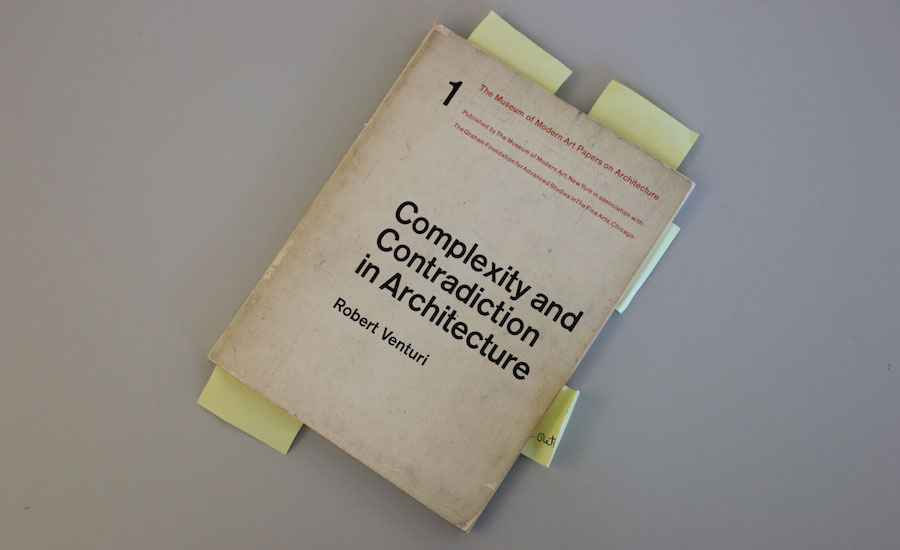PAST TALKS 2022
3 May 2022
Chaired by Natália Peťková
ENSA Paris-Malaquais
DOMINIK HOEHN
Cambridge University
Respondent:
Angela Gigliotti
Det Danske Institut i Rom
![]()
***
CARLA FRICK-CLOUPET
ENSA St.Etienne
Respondent:
Vikki Addona
McGill
![]()
Chaired by Natália Peťková
ENSA Paris-Malaquais
Anthropology and Architectural (Re)presentations
DOMINIK HOEHN
Cambridge University
Respondent:
Angela Gigliotti
Det Danske Institut i Rom

In 2018, a building called BLOX was opened on Copenhagen’s harbour front after more than a decade-long period of design, planning and construction. Supported by the Danish government and by a private foundation, BLOX was to become the meeting point for ‘Denmark’s world of architecture, design and new ideas’, housing the Danish Architecture Centre and other organisations. Based on anthropological fieldwork that took place in and around this new building complex, this research analyses how architects and other professionals seek to re-work architecture through a focus from fieldwork based outside the architectural studio; and examine some of these practices of architecture – or modes of ‘doing architecture’ – that are often ignored or subordinated to other, more familiar architectural forms in anthropological approaches to the architectural profession. Establishing BLOXHUB, the name of a new urban innovation hub and co-working space inside BLOX, was one key decision through which the ambition to ‘co-create’ was to be realised. The architects and other professionals that form part of the BLOXHUB community (as they call themselves) enact architecture through a variety of everyday practices that include producing oral and written outputs that animate, define and explain their work and views. Architecture is a professional practice and a discipline, usually practised in architectural studios and schools. But it is also given many other forms. This presentation offers one anthropological take on some of these other, contemporary forms of the architectural.
***
How to Make Ambiguous Architecture With Words
CARLA FRICK-CLOUPET
ENSA St.Etienne
Respondent:
Vikki Addona
McGill

In 1966, Robert Venturi published "Complexity and Contradiction in Architecture", a manifesto that criticizes the modern dogma to defend an ambiguous architecture. If the effectiveness of this critique and its importance are no longer to be demonstrated today, I nevertheless hypothesize that what allows this critique remains to be developed and exploited in order to continue building operative critical tools.
My PhD work starts from this hypothesis and develops the idea that the singularity of Venturi's manifesto is located in its use of words. Indeed, this manifesto is an analysis that moves architecture through language based on linguistic enunciations, such as the phenomenon of "both and" or "and inclusive" rather than "Or exclusive". This movement of language moves the critique away from nominative and binary grammar thus avoiding clear, set definitions in order to “fix in the inbetween” (Cassin, 2018) and to “stay with the trouble” (Haraway, 2016).
My work aims to develop Venturi's language tools. In parallel, I analyze contemporary, mainly Franco-Belgian, projects. Like Venturi, I build this analysis through language tools. But unlike Venturi, I do not use enunciations such as the phenomenon of "both and", but employ performative verbs (Austin, 1962) for their critical capacity (Butler, 2008; Cassin, 2018) and their ability to link enunciation and action, bringing theory and practice together. Using verbs allows me to immerse myself in the reality of the projects, to conjugate actions with the appropriate subject and object complements, and thus to reconstruct project processes. The use of the verb is thus performative: it transforms and acts in the particular situation of the sentence it co-constructs: it produces the analysis.
In this intervention, I would like to share an extract of this ongoing performative analysis, to see how verbs are efficient tools for analysis but also how the studied corpus deals with the critique of modernity.
My PhD work starts from this hypothesis and develops the idea that the singularity of Venturi's manifesto is located in its use of words. Indeed, this manifesto is an analysis that moves architecture through language based on linguistic enunciations, such as the phenomenon of "both and" or "and inclusive" rather than "Or exclusive". This movement of language moves the critique away from nominative and binary grammar thus avoiding clear, set definitions in order to “fix in the inbetween” (Cassin, 2018) and to “stay with the trouble” (Haraway, 2016).
My work aims to develop Venturi's language tools. In parallel, I analyze contemporary, mainly Franco-Belgian, projects. Like Venturi, I build this analysis through language tools. But unlike Venturi, I do not use enunciations such as the phenomenon of "both and", but employ performative verbs (Austin, 1962) for their critical capacity (Butler, 2008; Cassin, 2018) and their ability to link enunciation and action, bringing theory and practice together. Using verbs allows me to immerse myself in the reality of the projects, to conjugate actions with the appropriate subject and object complements, and thus to reconstruct project processes. The use of the verb is thus performative: it transforms and acts in the particular situation of the sentence it co-constructs: it produces the analysis.
In this intervention, I would like to share an extract of this ongoing performative analysis, to see how verbs are efficient tools for analysis but also how the studied corpus deals with the critique of modernity.